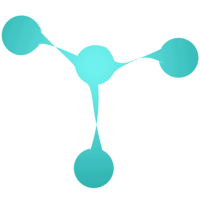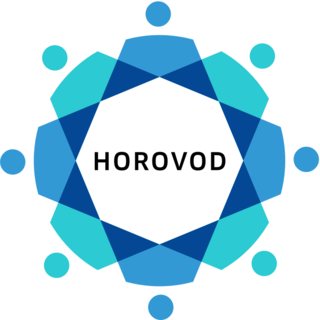CellProfiler is free, open-source software designed to enable biologists without training in computer vision or programming to quantitatively measure phenotypes from thousands of images automatically. Advanced algorithms for image analysis are available as individual modules that can be placed in sequential order together to form a pipeline; the pipeline is then used to identify and measure biological objects and features in images, particularly those obtained through fluorescence microscopy.

Compute Unified Device Architecture (CUDA) is a proprietary parallel computing platform and application programming interface (API) that allows software to use certain types of graphics processing units (GPUs) for accelerated general-purpose processing, an approach called general-purpose computing on GPUs (GPGPU). CUDA API and its runtime: The CUDA API is an extension of the C programming language that adds the ability to specify thread-level parallelism in C and also to specify GPU device specific operations (like moving data between the CPU and the GPU). CUDA is a software layer that gives direct access to the GPU's virtual instruction set and parallel computational elements for the execution of compute kernels. In addition to drivers and runtime kernels, the CUDA platform includes compilers, libraries and developer tools to help programmers accelerate their applications.

Torch is an open-source machine learning library, a scientific computing framework, and a scripting language based on Lua. It provides LuaJIT interfaces to deep learning algorithms implemented in C. It was created by the Idiap Research Institute at EPFL. Torch development moved in 2017 to PyTorch, a port of the library to Python.
Eclipse Deeplearning4j is a programming library written in Java for the Java virtual machine (JVM). It is a framework with wide support for deep learning algorithms. Deeplearning4j includes implementations of the restricted Boltzmann machine, deep belief net, deep autoencoder, stacked denoising autoencoder and recursive neural tensor network, word2vec, doc2vec, and GloVe. These algorithms all include distributed parallel versions that integrate with Apache Hadoop and Spark.

TensorFlow is a free and open-source software library for machine learning and artificial intelligence. It can be used across a range of tasks but has a particular focus on training and inference of deep neural networks.
The following table compares notable software frameworks, libraries and computer programs for deep learning.

Keras is an open-source library that provides a Python interface for artificial neural networks. Keras was first independent software, then integrated into TensorFlow library, and later supporting more. "Keras 3 is a full rewrite of Keras [can be used] as a low-level cross-framework language to develop custom components such as layers, models, or metrics that can be used in native workflows in JAX, TensorFlow, or PyTorch — with one codebase." Keras 3 will be the default Keras version for TensorFlow 2.16 onwards, but Keras 2 can still be used.
Apache MXNet is an open-source deep learning software framework that trains and deploys deep neural networks. It aims to be scalable, allows fast model training, and supports a flexible programming model and multiple programming languages. The MXNet library is portable and can scale to multiple GPUs and machines. It was co-developed by Carlos Guestrin at the University of Washington, along with GraphLab.

spaCy is an open-source software library for advanced natural language processing, written in the programming languages Python and Cython. The library is published under the MIT license and its main developers are Matthew Honnibal and Ines Montani, the founders of the software company Explosion.
Caffe is a deep learning framework, originally developed at University of California, Berkeley. It is open source, under a BSD license. It is written in C++, with a Python interface.
PyTorch is a machine learning library based on the Torch library, used for applications such as computer vision and natural language processing, originally developed by Meta AI and now part of the Linux Foundation umbrella. It is recognized as one of the two most popular machine learning libraries alongside TensorFlow, offering free and open-source software released under the modified BSD license. Although the Python interface is more polished and the primary focus of development, PyTorch also has a C++ interface.
The Open Neural Network Exchange (ONNX) [] is an open-source artificial intelligence ecosystem of technology companies and research organizations that establish open standards for representing machine learning algorithms and software tools to promote innovation and collaboration in the AI sector. ONNX is available on GitHub.

ROCm is an Advanced Micro Devices (AMD) software stack for graphics processing unit (GPU) programming. ROCm spans several domains: general-purpose computing on graphics processing units (GPGPU), high performance computing (HPC), heterogeneous computing. It offers several programming models: HIP, OpenMP/Message Passing Interface (MPI), and OpenCL.
In computer vision, SqueezeNet is the name of a deep neural network for image classification that was released in 2016. SqueezeNet was developed by researchers at DeepScale, University of California, Berkeley, and Stanford University. In designing SqueezeNet, the authors' goal was to create a smaller neural network with fewer parameters while achieving competitive accuracy.

Dask is an open-source Python library for parallel computing. Dask scales Python code from multi-core local machines to large distributed clusters in the cloud. Dask provides a familiar user interface by mirroring the APIs of other libraries in the PyData ecosystem including: Pandas, scikit-learn and NumPy. It also exposes low-level APIs that help programmers run custom algorithms in parallel.

Horovod is a free and open-source software framework for distributed deep learning training using TensorFlow, Keras, PyTorch, and Apache MXNet. Horovod is hosted under the Linux Foundation AI. Horovod has the goal of improving the speed, scale, and resource allocation when training a machine learning model.

NNI is a free and open-source AutoML toolkit developed by Microsoft. It is used to automate feature engineering, model compression, neural architecture search, and hyper-parameter tuning.
LightGBM, short for Light Gradient-Boosting Machine, is a free and open-source distributed gradient-boosting framework for machine learning, originally developed by Microsoft. It is based on decision tree algorithms and used for ranking, classification and other machine learning tasks. The development focus is on performance and scalability.

CatBoost is an open-source software library developed by Yandex. It provides a gradient boosting framework which among other features attempts to solve for Categorical features using a permutation driven alternative compared to the classical algorithm. It works on Linux, Windows, macOS, and is available in Python, R, and models built using catboost can be used for predictions in C++, Java, C#, Rust, Core ML, ONNX, and PMML. The source code is licensed under Apache License and available on GitHub.
Originally developed in 2019 by Microsoft under the name Coco and later rebranded to Confidential Consortium Framework (CCF), it is an open-source framework for the development of a new category of performant applications that focuses on the optimization of secure multi-party computation and data availability. Intended to accelerate the adoption of blockchain technology by enterprises, CCF can enable a variety of high-scale, confidential permissioned distributed ledger networks that meet key enterprise requirements.









